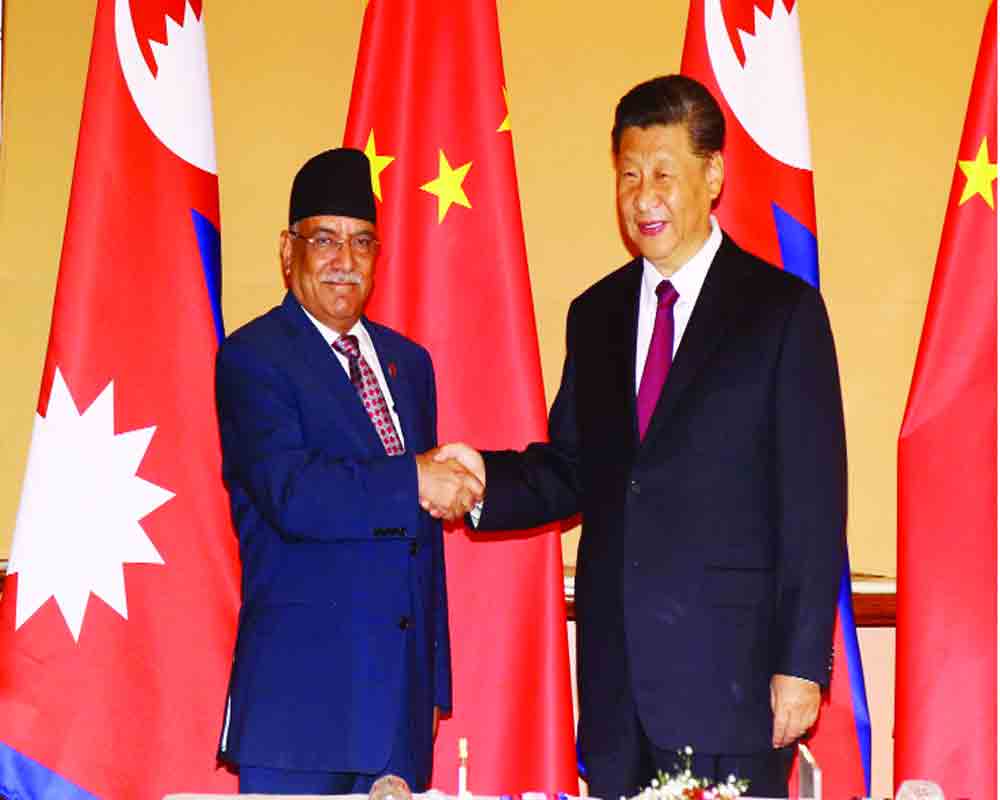Nepal is exercising its strategic autonomy; distancing itself from the bullying Chinese dragon
Nepal is recovering from its long annual hangover after celebrating Dussehra and Tihar. It energises Nepal to face the winter and the new year Vikram Samvat 2080 but with one-third of Nepal in India and abroad with 1500 youth leaving Nepal every day. The rising standards of living and consumption are visible to me who has seen Nepal almost annually since 1959. Still, people are rich or very poor with the middle class small. People are happy except for the victims of the dengue and Jajarkot earthquake. Nepalese are happy with so little. When piped water, electricity, schools and hospitals reached the valleys or near the road network, people descended from the hills to avail man-made facilities, forfeiting nature’s gifts to the hills. Hastily carved unmetalled roads have scarred the hills polluting the environment. Scooters, cars, motorbikes, trucks, tractors…anything with an engine moves along dusty tracks. Some people began returning to the hills.
Last week Kathmandu news was dominated by one man: businessman- politician and expelled from CPN UML, Durga Prasain. He threatened to bring into Kathmandu 10 lakh protesters to rally against former PM and CPN UML chief, KP Oli. He is facing legal action for bad debt on loans taken from state banks. The debt, he says, will be repaid when he is solvent. Prasian has roped in King Gyanendra who is patiently waiting in the distant hope that monarchy will be restored. The mood in the country for the return of loyalty is growing given the pathetic track record of the secular, federal, democratic republic of Nepal. It was the Prachanda-led decade-long Maoist civil war that dismantled the monarchy in 2008 which was ratified by the 2015 constitution. Gyanendra attended a Prasain-organised function in East Nepal at which he said: “We never wanted Nepal to become a republic that sends 10 mn youth to the Gulf countries”.
Gyanendra is on a tight leash from the state although his daughter-in-law Himani is popularly active, doing social welfare. Gyanendra has met the Chief Minis ter of UP, Yogi Adityanath twice this year. There’s a strong and historic bond between the Shah dynasty and Gorakhnath Peeth of Adityanath. The royalists RPP led by Rajendra Lindgen (both the old leaders Pashupati Rana and Kamal Thapa have been marginalised) has made big electoral gains. People ask me whether India is supporting the formation of Hindu Rashtra and the return of monarchy. I say the decision will be that of the people of Nepal. But Buddhiman Gurung, a Nepali Congress businessman who lives in Lame Ahal, Pokhara where I too reside in Nepal, says emphatically: “Monarchy can never come back”. But there is little doubt that support for the royals has grown exponentially. It is a clear reflection of the satisfaction that the current quality of governance provides.
Prachanda the awesome leader of the Maoist Party with 32 seats in a house of 275 and whose party’s fortunes are declining, has ensured his popularity is rising by attacking corruption frontally. He leads an alliance government that has former PM Sher Bahadur Deuba-led Nepali Congress as the largest party. But such is the electoral dynamic between NC and former Prime Minister KP Oli’s CPN UML (the second largest party) that Prachanda is the kingmaker. He will complete one year in power next month and though there is a power-sharing arrangement with Deuba, he has been saying he will rule for all five years, apparently by doing an Oli on Deuba. In the previous Oli-led alliance, Prachanda had a power-sharing agreement with Oli which the latter did not honour.
A rash of scams involving politicians and bureaucrats has made people very angry: Gold smuggling from China, human trafficking of Nepalese passed off as Bhutanese refugees for asylum in the US and the Baluwatar land sales scam. These involve former Prime Ministers, ministers, their spouses and sons. Former Water Resources Minister Dipak Gyawali said: “corruption will emasculate Nepal”.
The other contemporary issue is Transitional Reconciliation and Justice, dating back to the Maoist insurgency 17 years ago. On a visit to Nepal recently, UN Secretary-General António Guterres agreed to help Nepal in finding a resolution emphasising it has to be ‘victim-centric’. The victims of the Jajarkot earthquake are still out in the cold as Prachanda goes to Dubai for a climate change summit tomorrow.
The ban on TikTok proved extremely unpopular. Shanti Gurung told me how she and her friends have circumvented it through VPN. TikTok has made celebrities and some people very rich in Nepal. Senior CPC leader of Tibet Affairs Management Executive Committee Wang Junzheng visited Nepal this month as part of regular visits by Chinese leaders.
Prachanda on his visit to China in September did not sign in on BRI 2.0 but Nepal has subscribed to US MCC after years of political wrangling and covert threats by the US. Nepal is exercising its strategic autonomy, but China is a bullying neighbour. Kathmandu wants villages in the 21 Northern districts to patch up with China’s Tibet power grid. Chinese-built airports with high-interest loans at Bhairawa and Pokhara are not in business, restricted to domestic flights. Flying over the IAF Jaguar base at Gorakhpur is the problem. But the issue can be resolved. Geography is India’s biggest asset in bilateral relations with Nepal which should no longer choose to be a yam between China and India.
(The writer, a retired Major General, was Commander, IPKF South, Sri Lanka, and founder member of the Defence Planning Staff, currently the Integrated Defence Staff. Views are personal)



























